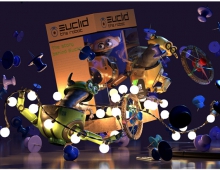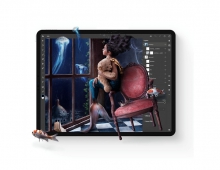
Adobe pictures new digital photo format
Adobe has introduced a new file format for digital photos that it hopes will replace the plethora of formats used today for raw files.
Raw files contain the information captured by a camera sensor before any in-camera processing. The raw digital camera files offer increased control over the image, and their use is increasingly popular, especially among professional photographers and digital photography hobbyists, according to Adobe.
However, nearly every camera that offers a raw file output uses its own file format. This is a problem when managing image files, especially when users want to archive their digital pictures, said Kevin Connor, director of product management for professional digital imaging products at Adobe.
"It is such a mess today, once a camera model is discontinued, that raw format essentially becomes a dead format, and you don't want to be archiving your files in a dead format," he said. "We're taking a very aggressive step to provide a solution."
Adobe's new file format is called Digital Negative Specification, which it abbreviates as DNG. The company on Monday made available a free DNG Converter software tool that allows users to convert the raw formats from more than 65 cameras into the new DNG format. The first cameras with built-in support for DNG are expected to hit stores in about a year, Connor said.
"The main reason people would be interested right now is they can take their existing camera-specific formats, covert them to DNG, and then save those and know that they will be able to open them in the future," he said.
Adobe will make the DNG specification available at no cost and with no license requirement. Camera makers also have the freedom to add their own data fields to the specification. Adobe hopes the format will be adopted broadly, not only by camera makers but also in other devices such as printers and in software.
Although Adobe developed DNG with professional and advanced amateur digital camera users in mind, the format eventually could replace JPEG and other formats used by digital cameras for processed pictures, Connors said.
"I would not expect that it would, but it is certainly possible. With a unified format, it is possible for the user experience to be as easy as JPEG or TIFF," he said. "But there may not be a compelling reason for people at the lowest end of the market to switch, so it is hard to know for sure how it will play out."
However, nearly every camera that offers a raw file output uses its own file format. This is a problem when managing image files, especially when users want to archive their digital pictures, said Kevin Connor, director of product management for professional digital imaging products at Adobe.
"It is such a mess today, once a camera model is discontinued, that raw format essentially becomes a dead format, and you don't want to be archiving your files in a dead format," he said. "We're taking a very aggressive step to provide a solution."
Adobe's new file format is called Digital Negative Specification, which it abbreviates as DNG. The company on Monday made available a free DNG Converter software tool that allows users to convert the raw formats from more than 65 cameras into the new DNG format. The first cameras with built-in support for DNG are expected to hit stores in about a year, Connor said.
"The main reason people would be interested right now is they can take their existing camera-specific formats, covert them to DNG, and then save those and know that they will be able to open them in the future," he said.
Adobe will make the DNG specification available at no cost and with no license requirement. Camera makers also have the freedom to add their own data fields to the specification. Adobe hopes the format will be adopted broadly, not only by camera makers but also in other devices such as printers and in software.
Although Adobe developed DNG with professional and advanced amateur digital camera users in mind, the format eventually could replace JPEG and other formats used by digital cameras for processed pictures, Connors said.
"I would not expect that it would, but it is certainly possible. With a unified format, it is possible for the user experience to be as easy as JPEG or TIFF," he said. "But there may not be a compelling reason for people at the lowest end of the market to switch, so it is hard to know for sure how it will play out."





















